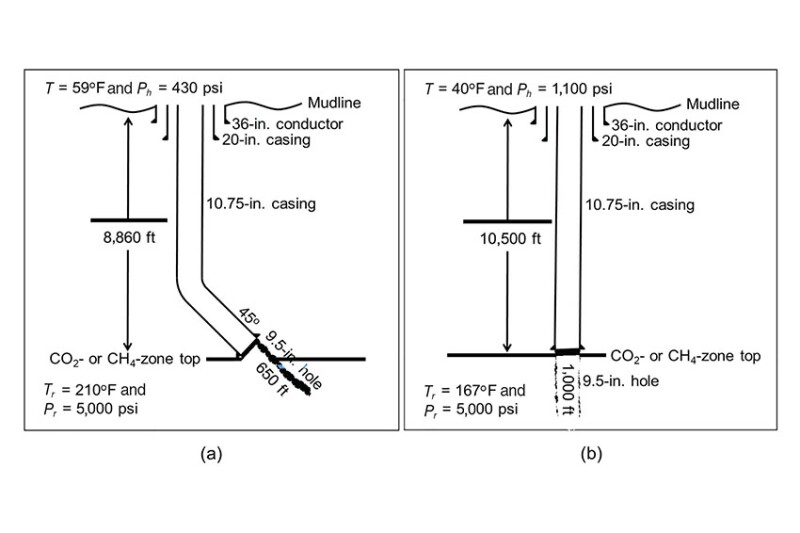A dynamic multiphase-flow simulator was used to investigate a capping operation for CO2 well blowouts. Following the typical sequence of a capping procedure and applying a soft shut‑in, different primary bore sizes and choke-line configurations were considered. Additionally, different reservoir flow rates, fluid types [CO2 and methane (CH4)] and water depths were investigated, with the intention of understanding what differentiates a CO2 blowout from that of CH4 under varying conditions.
Introduction
In offshore CO2 storage operations targeting saline aquifers, the depth and pressure gradient of such storage zones dictate that stored CO2 will almost always be in a supercritical state. Given that reality, the complexities of supercritical-to-gaseous phase transition, varying compressibilities (of both gas and supercritical fluid), and the formation of hydrates all must be addressed accurately in simulation if a path to using capping stacks in response to subsea CO2 blowouts is to be charted.


